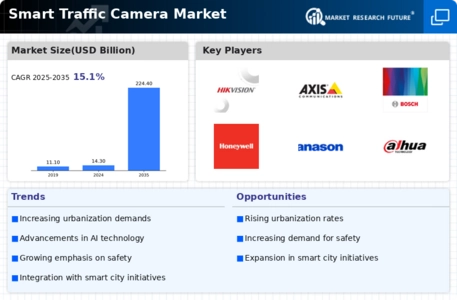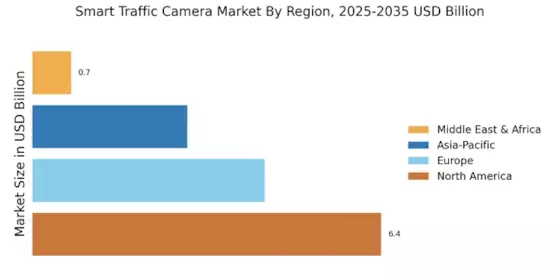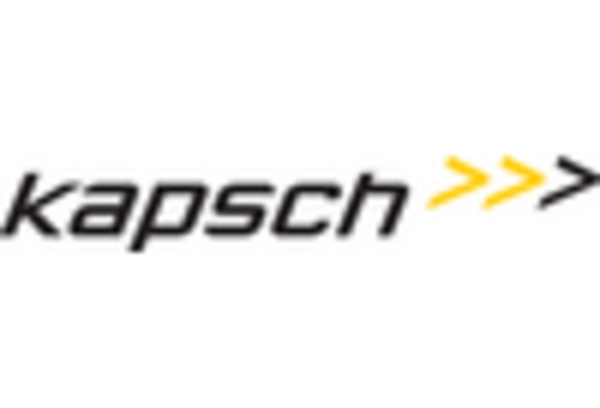Focus on Sustainability
Sustainability has emerged as a driving force within the Smart Traffic Camera Market. As environmental concerns gain prominence, cities are increasingly prioritizing solutions that minimize carbon footprints and promote eco-friendly practices. Smart traffic cameras contribute to this objective by enabling better traffic management, which can lead to reduced emissions from idling vehicles. Data indicates that effective traffic monitoring can decrease fuel consumption by approximately 20%. Furthermore, the integration of these cameras with renewable energy sources, such as solar power, enhances their sustainability profile. This focus on sustainable practices not only aligns with The Smart Traffic Camera Industry as a leader in the transition towards greener urban environments.
Advancements in AI and Analytics
The Smart Traffic Camera Market is significantly influenced by advancements in artificial intelligence and analytics. The incorporation of AI technologies allows for enhanced image recognition and data processing capabilities, enabling smarter traffic management solutions. For instance, AI-driven cameras can identify traffic patterns, detect violations, and even predict congestion before it occurs. This level of sophistication is expected to drive market growth, with projections indicating a compound annual growth rate of over 15% in the coming years. The ability to analyze vast amounts of data in real-time not only improves traffic flow but also enhances public safety, making the Smart Traffic Camera Market a vital player in modern urban infrastructure.
Government Initiatives and Funding
Government initiatives and funding are pivotal in propelling the Smart Traffic Camera Market forward. Various governments are recognizing the importance of intelligent traffic systems in enhancing road safety and reducing accidents. As a result, many are allocating substantial budgets to implement smart traffic solutions. For example, recent reports suggest that several countries have earmarked billions for smart city projects, which prominently feature smart traffic cameras. This financial backing not only accelerates the deployment of these technologies but also fosters public-private partnerships, further stimulating innovation within the Smart Traffic Camera Market. The proactive stance of governments indicates a long-term commitment to improving urban mobility through advanced traffic management systems.
Integration with Smart City Initiatives
The Smart Traffic Camera Market is experiencing a notable surge due to its integration with smart city initiatives. As urban areas evolve, municipalities are increasingly adopting smart technologies to enhance traffic management and improve public safety. Smart traffic cameras play a pivotal role in this transformation by providing real-time data analytics, which assists in optimizing traffic flow and reducing congestion. According to recent data, cities that have implemented smart traffic solutions have reported a decrease in traffic delays by up to 30%. This integration not only enhances the efficiency of urban transport systems but also contributes to the overall sustainability goals of cities, making the Smart Traffic Camera Market a critical component of future urban planning.
Rising Urbanization and Traffic Congestion
The rising trend of urbanization is a significant driver of the Smart Traffic Camera Market. As more people migrate to urban centers, the resulting increase in vehicle numbers leads to heightened traffic congestion. This scenario creates an urgent need for effective traffic management solutions. Smart traffic cameras provide a viable answer by offering real-time monitoring and data collection, which can inform traffic control measures. Recent statistics reveal that urban areas with smart traffic systems have seen a reduction in congestion levels by up to 25%. This growing urban population, coupled with the demand for efficient traffic solutions, positions the Smart Traffic Camera Market as a crucial element in addressing the challenges of modern urban mobility.

















Leave a Comment